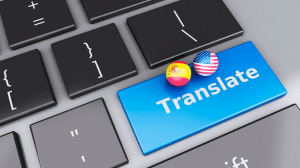In the rapidly evolving landscape of scientific research, dissemination of findings across international borders is essential for advancing knowledge and fostering collaboration. For non-native English-speaking scientists, seeking publication in English-language journals often necessitates translating their research documents into English. While translation services offer a vital means of bridging linguistic barriers, the journey toward successful publication does not end with translation alone. Post-translation editing, carried out by professional science editors, is pivotal in refining translated manuscripts to meet the rigorous standards expected by English-language journals.
By exploring the challenges of translation, the limitations of accuracy alone, and the significance of editing for coherence, concision, and clarity, we illuminate the critical importance of post-translation editing to enhance the quality and impact of science reports.
Also Read:
- Scientific English Writing
- Why Articles Matter in English Language
- English Translation
- Science Language Translation Service

The Need for Translation Services in Science Publishing
Publication in English-language journals provides scientists access to a global audience. English is the dominant language in scientific communication, and journals published in English are often more widely read and cited. Thus, by translating their research documents into English, non-native English-speaking scientists can ensure that their findings reach a broader audience, maximizing their impact and contribution to advancing knowledge.
Effectively communicating research findings in English is crucial for broader dissemination and recognition within the scientific community. Language barriers often pose significant challenges, such as difficulties in expressing complex scientific concepts accurately, navigating the nuances of scientific terminology, and adhering to the conventions of academic writing in English. Cultural differences in communication styles and expectations may further complicate the process. Translation services enable non-native English-speaking scientists to overcome linguistic barriers and participate more fully in the global scientific discourse.

The Translation Process
The translation process requires both linguistic expertise and subject matter knowledge. Translators are tasked with accurately conveying the content, meaning, and nuances of the original text into the target language. Translators must possess a deep understanding of both the source and target languages, as well as specialized knowledge in the scientific field relevant to the document being translated. They must meticulously analyze the source text, deciphering technical terminology, complex concepts, and contextual nuances to produce a faithful translation that captures the essence of the original content.
Various techniques are applied to ensure the accuracy and fidelity of the text. These techniques may include conducting research to clarify ambiguous terms or concepts, consulting subject matter experts when necessary, and employing specialized translation tools and resources. Additionally, translators often engage in iterative revisions and quality assurance checks to refine the translation and address any discrepancies or inconsistencies. Ultimately, the goal of skilled translators is to produce a translated document that is linguistically accurate, conceptually coherent, and culturally appropriate for the target audience.
Translation of scientific documents, however, presents unique challenges and considerations that differ from other types of texts. Scientific language is highly specialized, often containing technical terminology, complex terminology, and specialized jargon that may not have direct equivalents in the target language. This poses challenges for translators in accurately conveying the precise meaning and nuances of scientific concepts while ensuring clarity and readability in the translated text. Moreover, scientific documents may also contain tables, figures, equations, and other graphical elements that require careful translation and formatting to maintain their integrity and comprehensibility.

The Limitations of Translation Alone
While accurate translation is a crucial first step in making scientific research accessible to English-speaking audiences, it may not be sufficient to meet the rigorous standards expected by English-language journals. This is because scientific communication involves more than just conveying information; it requires precision, clarity, and adherence to specific stylistic and formatting conventions. Translating scientific documents involves not only linguistic challenges but also the accurate representation of complex scientific concepts and terminology. Furthermore, the nuances of scientific language and the intricacies of scientific research may be lost in translation, making it difficult for readers to fully grasp the content and implications of the research.
Several common issues often arise in translated manuscripts that can hinder their suitability for publication in English-language journals. These include grammatical errors, awkward phrasing, inconsistent terminology, and cultural nuances that may not be fully understood or properly conveyed in the translation process. Additionally, translated manuscripts may lack the clarity, coherence, and precision necessary for effective scientific communication. For example, ambiguous or convoluted language may obscure the author’s intended meaning, while inaccuracies in terminology may lead to misunderstandings or misinterpretations of the research findings.
Given the limitations of translation alone, there is a clear need for post-translation editing to refine translated manuscripts and ensure their suitability for publication in English-language journals. Post-translation editing involves thoroughly reviewing the translated text by professional science editors with expertise in the relevant scientific field. Professional science editors meticulously evaluate the translated manuscript for accuracy, clarity, coherence, and adherence to stylistic and formatting conventions. They address any grammatical errors, inconsistencies, or ambiguities in the text, as well as refine the language and structure to enhance readability and comprehension. By having their manuscripts edited post-translation, authors can ensure that their research is effectively communicated to English-speaking audiences, thereby increasing the impact and visibility of their research within the scientific community.

Key Considerations in Post-Translation English Editing
Post-translation editing is a meticulous process aimed at refining translated manuscripts to meet the standards expected by English-language journals. Professional science editors will focus on several key areas. They first review the translated text for grammatical errors, syntax inconsistencies, and awkward phrasing that may impede comprehension. Next, editors focus on clarity and coherence, ensuring that the text flows logically and smoothly. They also verify the consistency of the terminology and ensure that scientific concepts are accurately conveyed. Furthermore, editors will review the overall structure and organization of the manuscript, identifying areas requiring improvement to enhance readability and coherence.
Science editors apply various techniques to refine translated manuscripts and improve their quality. One common technique is to conduct thorough line-by-line editing, addressing grammatical errors, punctuation inconsistencies, and stylistic issues. Editors may also employ comparative reading techniques, comparing the translated text with the original source to ensure accuracy and fidelity. Additionally, editors may utilize specialized tools and resources, such as style guides, glossaries, and reference materials, to verify terminology and ensure consistency.
Maintaining scientific accuracy and integrity is crucial during the post-translation editing process. Professional science editors must ensure that the translated manuscript accurately represents the original research findings and adheres to the conventions of scientific communication. This includes verifying the accuracy of technical terminology, ensuring the correct interpretation of scientific concepts, and preserving the integrity of the research methodology and results. Editors also play a crucial role in identifying and correcting any errors or inconsistencies that may compromise the scientific validity of the manuscript.

Ensuring Effective Post-Translation English Editing
When selecting a reputable editing service for post-translation editing, it’s essential to research the credentials and experience of potential service providers, ensuring they have expertise in both the target language and the relevant scientific field. Authors should consider factors such as the reputation of the editing service, the qualifications of the editors, and the quality of their previous work. Additionally, authors should communicate their specific editing needs and preferences clearly to the editing service, providing detailed instructions and guidelines to guide the editing process. Collaboration between translators, editors, and authors is vital for achieving the best results in post-translation editing. Translators can provide valuable insights into the nuances of the original text by ensuring accuracy and fidelity in the translation. Editors, in turn, can offer expertise in language and style, refining the translated manuscript for clarity, coherence, and readability. Authors play a crucial role in reviewing and incorporating feedback from translators and editors, ensuring that the final manuscript accurately represents their research findings and meets the standards expected by English-language journals. Through effective collaboration and communication, translators, editors, and authors can enhance the quality and impact of translated manuscripts, facilitating successful publication in English-language journals.
While translation bridges linguistic barriers, post-translation editing ensures that translated manuscripts meet the rigorous standards expected by English-language journals. By investing in post-translation editing, scientists can effectively communicate their findings to a global audience, facilitating successful publication in English-language journals and contributing to advancing scientific knowledge.




